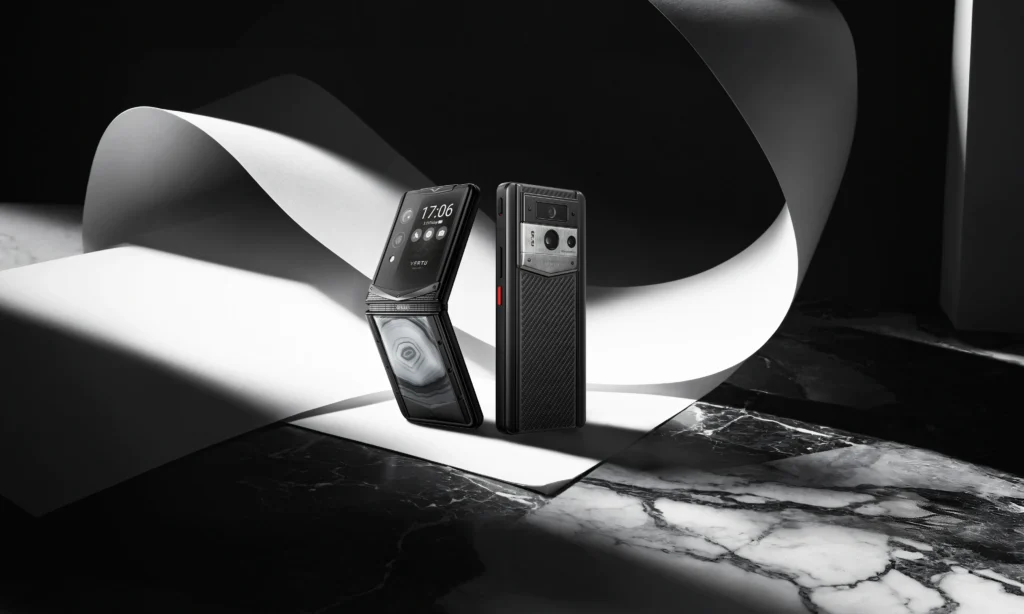Is there anything more frustrating than a call dropping mid-sentence or a video buffering endlessly? We’ve all been there. But what if your mobile signal could be stronger and more reliable? The good news is that in 2025, a combination of powerful new technologies is set to dramatically improve your connection.
This guide will walk you through everything you need to know about the future of mobile signals, from the technology in your pocket to the networks that power it. Get ready for a stronger connection.
Understanding Signal Strength: What Does ‘Strongest' Really Mean in 2025?
First, let's redefine what a “strong” signal means. It's no longer just about the number of bars on your screen. In 2025, a top-tier connection is a blend of signal strength, quality, and network capacity working in perfect harmony.
Decoding dBm: Your Signal's Secret Language
Your phone's signal strength is measured in decibel-milliwatts (dBm). It's a negative number, and the closer it is to 0, the more powerful the signal.
-
-50 dBm to -70 dBm: Excellent signal for a seamless experience.
-
-70 dBm to -90 dBm: Good signal, ensuring stable calls and data.
-
-90 dBm to -100 dBm: Fair signal, where you might notice occasional lag or dropped connections.
-
Below -100 dBm: Poor signal, leading to unstable connections and poor call quality.
However, in the 5G era, a high dBm value alone doesn't guarantee the best experience, especially when the network is congested. It's crucial to also consider signal quality.
More Than Just Bars: The Three Pillars of 2025 Signal Performance
To truly understand signal performance in 2025, you need to look at three key factors:
-
Signal Strength (RSRP): This is the dBm value that determines if your phone can “hear” the cell tower.
-
Signal Quality (SINR): This measures the ratio of useful signal to background noise. A higher SINR means more stable and faster data transfer.
-
Network Capacity: This refers to the amount of data and the number of users a cell tower can handle at once. Even with great signal strength and quality, network congestion can slow you down.
The Phone's Power: 2025 Hardware Innovations for Superior Signal
The device in your hand is the first and most critical link in the signal chain. In 2025, phones are being built with significant advancements to better capture and process signals.
Advanced 5G Modems: The Brains Behind Your Signal in 2025
The 5G modem is the “brain” of your phone's communication system. The latest modems are smarter and more powerful than ever, featuring:
-
Multi-band support: They can connect to multiple 5G bands (low, mid, and high-frequency millimeter wave) simultaneously for broader coverage and faster speeds.
-
Carrier Aggregation: This technology bundles bandwidth from multiple frequency bands to significantly boost data rates.
-
Efficient signal processing: Advanced algorithms help decode data more effectively, even in weak signal areas, reducing errors and improving reliability.
Antenna Design & MIMO: Your Phone's Signal Superheroes
A phone's antennas are its signal catchers. High-end phones in 2025 feature sophisticated antenna technology:
-
MIMO (Multiple-Input Multiple-Output): This uses multiple antennas on both the phone and the cell tower to send and receive data simultaneously, dramatically increasing data throughput and signal reliability.
-
Smart antenna switching: Your phone can automatically select the best antenna for the current environment or even switch between them dynamically to optimize the signal.
-
Integrated millimeter-wave antennas: Special tiny antenna modules are built into phones to capture high-frequency mmWave signals for lightning-fast speeds at close range.
Is Your Phone Ready for 2025?
To ensure your phone is future-proof, check for these key specifications:
-
Does it support both Sub-6GHz and mmWave 5G? Full-band support ensures the best performance in all scenarios.
-
Which generation 5G modem does it have? The latest models, like the Qualcomm Snapdragon X70/X75 series, offer superior signal processing.
-
Does it support Wi-Fi 6E/7? Strong Wi-Fi performance can compensate for cellular dead zones indoors.
Carrier's Kingdom: How Network Advances Boost Your 2025 Signal
Even the best phone needs a powerful network. Mobile carriers are making huge strides in upgrading their infrastructure to deliver a stronger, more reliable signal to you.
Mid-Band 5G (C-band): The Gold Standard for 2025 Coverage
Mid-band 5G, particularly the C-band, is considered the “sweet spot” for 5G networks in 2025. It strikes the perfect balance between coverage and speed:
-
Fast Speeds: It's significantly faster than low-band 5G, capable of delivering multi-gigabit download speeds.
-
Strong Penetration: It penetrates buildings better than high-frequency millimeter wave, improving indoor coverage.
-
Wide Coverage: Its range is broader than millimeter wave, providing a more continuous 5G experience.
Network Densification: Small Cells, Big Impact on Your Signal
To boost signal quality and capacity, carriers are implementing network densification. This means deploying more Small Cells, especially in urban and densely populated areas.
-
Eliminates Dead Zones: Small Cells fill in coverage gaps left by larger towers in places like malls, stadiums, and transit hubs.
-
Increases Network Capacity: By offloading traffic from larger towers, small cells reduce congestion and improve overall network speed.
-
Improves Indoor Signal: Small Cells placed inside or near buildings significantly enhance indoor signal quality.
AI & Network Slicing: Smarter, Faster Signals for 2025 Connectivity
Carriers are using Artificial Intelligence (AI) and Network Slicing to make their networks smarter and more efficient.
-
AI-Optimized Networks: AI analyzes network traffic and user behavior in real-time to dynamically allocate resources and prevent congestion.
-
Network Slicing: This allows carriers to divide a physical network into multiple virtual networks, each tailored for a specific use case like autonomous driving or HD video streaming, ensuring optimal signal quality for each service.
Beyond the Tech: Environmental Factors & User Strategies
Your environment and how you use your phone also play a major role in signal strength.
The Signal Blockers: Buildings & Congestion in 2025
-
Physical Obstructions: Reinforced concrete, elevators, basements, and mountains can severely weaken signals.
-
Network Congestion: At concerts or festivals, even with full bars, speeds can plummet because the network has reached its capacity limit.
Instant Boosters: Tips for Your Current Phone
You can try these simple tricks right now to improve your signal:
-
Reboot your phone: This clears the network cache and forces it to find the best connection.
-
Toggle Airplane Mode: This forces your phone to re-scan for available networks.
-
Update your software: Manufacturers often release updates that optimize signal performance.
-
Use VoLTE/VoWiFi: Voice over LTE and Wi-Fi Calling can dramatically improve call quality in poor signal areas.
Future-Proofing Your Choice: Picking the Best Signal Phone for 2025 & Beyond
Choosing a phone that is ready for the network challenges of tomorrow is key to ensuring a consistently great connection.
What to Look for in a 2025 Phone for Top Signal Performance
-
Latest Generation 5G Modem: Look for flagship chips from Qualcomm or MediaTek.
-
Full 5G Band Support: Ensure it supports both Sub-6GHz and mmWave.
-
Optimized Antenna Design: Flagship models typically have superior antenna layouts.
-
Wi-Fi 7 or Wi-Fi 6E Support: This ensures a seamless experience in Wi-Fi covered areas.
-
eSIM Support: This gives you the flexibility to easily switch between carriers to find the best signal.
Satellite-to-Cell Connectivity: Bridging the Gaps in 2025
Starting in 2025, satellite-to-cell connectivity will become an essential technology for filling coverage gaps. Initially, it will be used for emergency calls and texts in remote areas without terrestrial signals. As the technology evolves, it has the potential to become a powerful supplement to ground-based networks.
A Glimpse Beyond 5G: The Road to 6G
While 5G is still being rolled out, the development of 6G is already underway. 6G promises to deliver even faster speeds, lower latency, and higher reliability, with the goal of creating a truly seamless global network that integrates satellites, drones, and terrestrial base stations.
FAQ (Frequently Asked Questions)
-
Q: Why is my 5G internet slow even with full bars?
-
A: Signal bars only show signal strength, not quality or network capacity. You might be in a congested area or experiencing high signal interference.
-
-
Q: What is a good dBm value?
-
A: Anything between -50 dBm and -70 dBm is considered excellent. A signal below -100 dBm is poor.
-
-
Q: Do cell signal boosters really work?
-
A: Yes, they are effective at improving indoor coverage by amplifying a weak external signal. Just ensure they are certified and legal for use in your region.
-
-
Q: Why don't I use my phone's 5G millimeter wave (mmWave) feature often?
-
A: mmWave offers incredible speeds but has a very short range and is easily blocked by obstacles. It's currently only deployed in specific high-traffic venues like stadiums and airports.
-
-
Q: Should I turn off 5G to save battery?
-
A: If your 5G signal is unstable, your phone may use more power searching for a connection. In areas with strong 5G, however, the faster data transmission can actually be more power-efficient.
-
-
Q: How can an eSIM give me a better signal?
-
A: An eSIM allows you to have multiple carrier profiles on one phone. This flexibility lets you instantly switch to a different carrier if your current one has a poor signal in your location.
-
-
Q: Will cell signals be more stable in 2025?
-
A: Yes. Thanks to the wider deployment of mid-band 5G, network densification, AI optimization, and emerging satellite connectivity, mobile signals in 2025 are expected to be significantly more stable, faster, and have better coverage.
-









